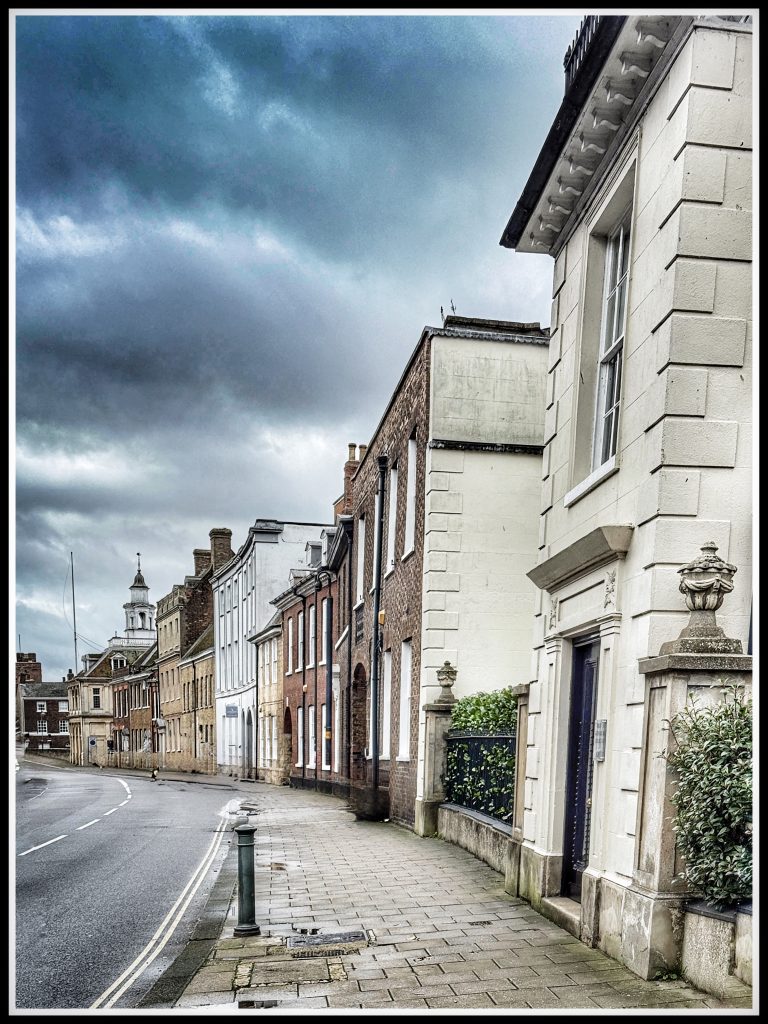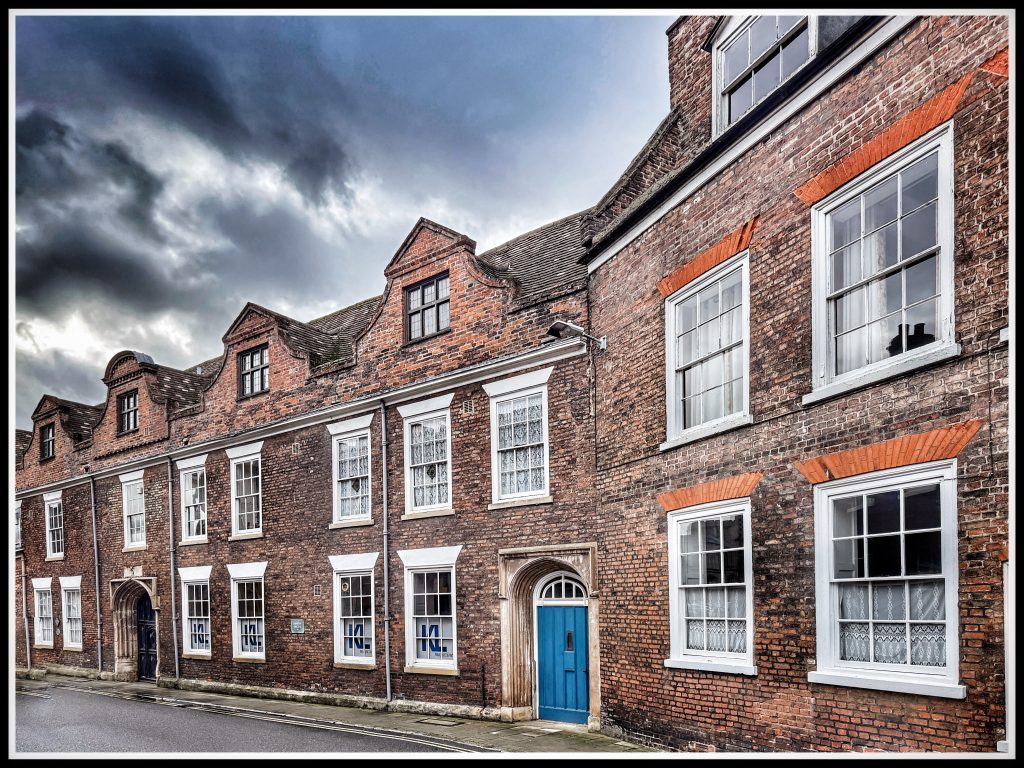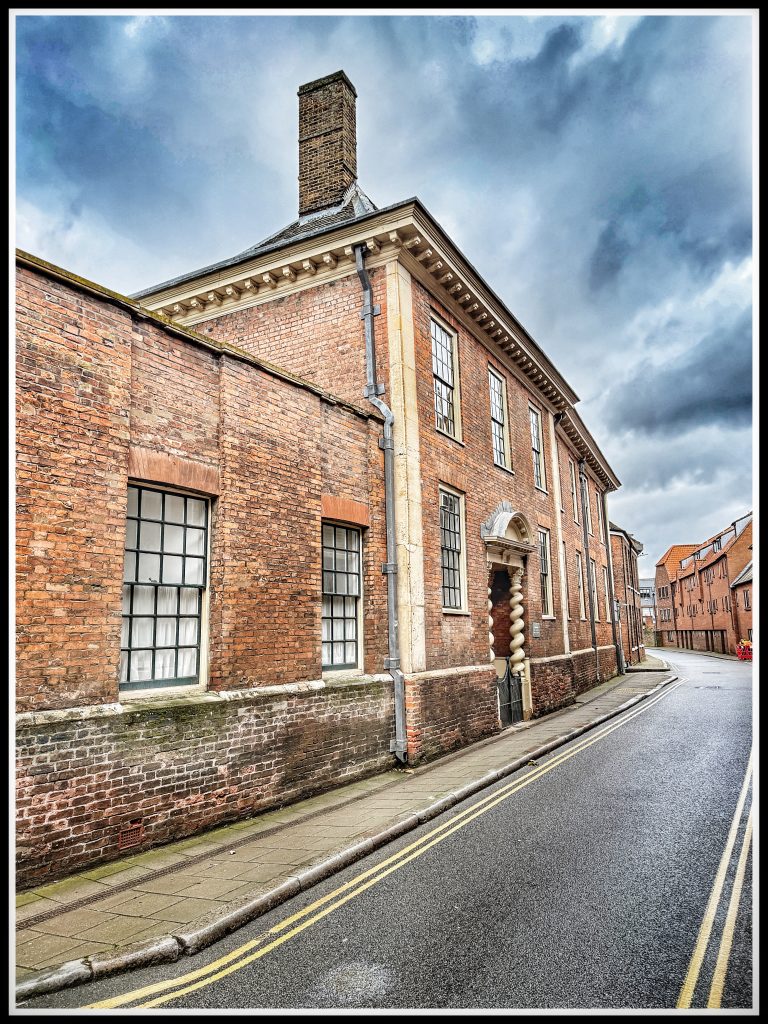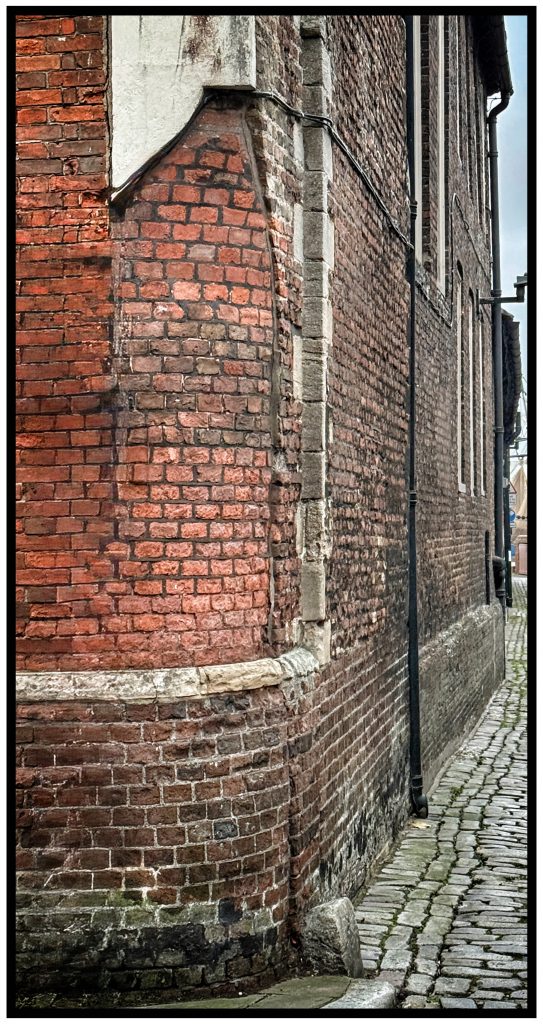The paving of King’s Lynn was neither simple nor swift. It was a civic adventure that spanned decades, uniting merchants, ministers, and mayors in one aim: to tame a medieval port’s disorderly streets and make them fit for an age of cleanliness, commerce, and pride.
The process of proposing and attempting to pass the first Paving Act for King’s Lynn in 1790 was a revealing episode in late Georgian civic life, combining practical ambition with political resistance. It exposed how difficult it was for a local community to secure parliamentary legislation even for basic improvements such as paving, lighting, and cleaning the streets.

Photo © J.Rye 2025
Opposition and Stalemate: Town Versus County
The initial push came on 23 August 1790, when Mayor Henry Bell convened a meeting of the principal inhabitants at the Town Hall. There, he presented a plan to modernise the town’s infrastructure – repaving the streets, lighting them, ensuring proper cleansing, and appointing watchmen for security. The proposal included funding estimates prepared by William Tuck, the Town Chamberlain, who calculated that about 63,000 square yards of paving were required, including the Saturday Market and Tuesday Market, at a cost of around £8,086, with an additional £1,614 for lighting and drainage.

Photo © J.Rye 2025
Public enthusiasm at this stage ran high. Only two days after the first meeting, a committee was formed under the mayor’s chairmanship to draft a Bill for Parliament. By 8 September 1790, the group agreed to fund the scheme by imposing a rate not exceeding 2 shillings and 3 pence in the pound on all buildings and land in St Margaret’s Parish, combined with certain tolls on carriages and goods entering the town (a precursor to the “congestion charge”). In October, the Corporation pledged £1,000 towards obtaining the Act, and by December a draft Bill was ready.
A public meeting on 10 January 1791 formally resolved to send the Bill to Parliament. However, this was the point at which opposition became organised. The resistance came largely from the country gentlemen – wealthy landowners in the surrounding rural parishes – who feared that if rates were established in Lynn, similar levies might one day be imposed on agricultural estates. Their influence in Parliament was sufficient to block the proposal. A series of attempts to negotiate between rural and urban interests failed, and in May 1791, the committee voted to postpone submission of the Bill until the next session. It was never revived in that form; when the Town Clerk, Robert Whincop, later submitted his account of the effort, he described the measure as having been by an Opposition thereto prevented from passing into a Law.
The 1790–91 attempt was significant because it established both the pattern and the sticking-point that would shape later efforts. Every figure of authority – from Bell to Tuck, the Corporation, merchants, and clergy – supported reform, but rural MPs and magistrates resisted the idea of shared taxation.

Photo © J.Rye 2025
The second attempt in 1795, under Mayor Edmund Rolfe Elsden, followed the same pattern. Though “nobility, gentry, clergy, farmers, and inhabitants” assembled in shared goodwill, financing again scuttled the proposal. Parliament refused to pass the Bill amid rural opposition, leaving the town literally stuck in the mud. A frustrated clerk, Robert Whincop, complained that Lynn’s ambitions had been “prevented from passing into a law by opposition thereto.” For another decade, Lynn’s cobbles crumbled and its drains overflowed.
It took twelve more years, several consultations, and finally a compromise plan between town and country representatives in 1802, to secure the third attempt’s success with the Paving Act of 1803.
The Breakthrough of 1803: Civic Determination Realised
At last, a breakthrough came in 1802, when a vestry meeting at St Margaret’s Church resolved to revive the measure with new tact and realism. Five town and five country representatives agreed on a shared funding formula: one-third from rural interests, two-thirds from the urban ratepayers. The resulting King’s Lynn Paving Act of 1803 passed easily through Parliament, receiving Royal Assent on 17 May 1803. It named forty Paving Commissioners, including the mayor, aldermen, MPs, merchants like Samuel Newnham (architect and first surveyor), and leading citizens such as Blencowe, Bagge, Hogge, and Everard.

Photo © J.Rye 2025
Their mandate was ambitious: to pave, light, cleanse, and improve the entire borough; to relocate the bustling Saturday and Beast Markets; and to construct a new southern approach from South Gate to St James’s Street (what was to be named London Road – the beginning of “Lynn’s M25”), complete with a bridge over the Millfleet. They were empowered to levy a rate of up to two shillings in the pound. They were also empowered to borrow on the security of those rates – a revolutionary mechanism in urban financing of the time.
From Rutted Track to Georgian Order
Within two years, Lynn was transformed. The New Road from South Gate cost £2,176, with related work along Greyfriars costing another £191 and the Back Road from the late East Gate £289. Large sums – over £6,000 – went on new paving, with further investment in lamps, lamp-irons, and scavengers’ gear. Streets such as Nelson Street, Broad Street, King Street, and Baker Lane were widened and re-laid with proper drainage. Dirt tracks that once trapped carts in winter now gleamed with neatly cambered stone, designed for both safety and show.
Most striking of all was the diversion of the route from South Gate (London Road). Instead of winding through “the narrowest and worst-built streets,” it was straightened eastward towards Ladybridge and the market squares. The improvement gave Lynn a new civic axis: open, navigable, and inviting to visitors entering from the south.
The 1806 Act and Public Backlash
Success encouraged overreach. By 1805 the Commissioners had spent their initial budget and fallen into debt. To recover their finances, they sought a second Act to authorise a further 1-shilling rate, prompting furious local opposition. Flyers denounced the scheme as “a stretch of power” and urged resistance at the Crown Inn in Church Street, led by the Rev. William Winder. But economics triumphed over protest: the Second Paving Act passed in April 1806, ensuring work could continue through the next decade.

Photo © J.Rye 2025
Legacy of Transformation
According to William White’s History, Gazetteer, and Directory of Norfolk (1836), by the 1830s “all the streets have been newly paved, obstructions and nuisances removed, and the avenue from the South Gate opened eastward in a direct line.” In just thirty years, Lynn had gone from rutted medieval alleys to one of the cleanest, best-organised towns in Norfolk.
The social impact was equally profound. Pavement lights and watchmen made night travel safer; regulated drains and scavengers improved public health; and market relocation modernised commerce. The Commissioners – though unelected – performed the functions of a modern local council: urban planning, environmental health, and policing. Their experiment prefigured the Improvement Commissioners movement sweeping Britain from 1766 to 1848, which transformed local government and set the stage for municipal reform.
The Paving Acts were more than practical: they marked a philosophical shift towards shared civic responsibility. For the first time, “improvement” became a public duty, defined by law rather than voluntary charity or individual enterprise. Lynn’s Acts joined kindred reforms in Birmingham (1769), Bath (1789), and Norwich (1806), forming a chain of enlightened legislation that reshaped British urban life.
What began as a squabble over cobblestones became a declaration of civic pride. The new roads, lamps, and pavements reflect not only the engineering vision of Newnham and Tuck, but also the moral conviction of a community determined to build for the common good.
© James Rye 2025
Book a Walk with a Trained and Qualified King’s Lynn Guide
Source
- Higgins, D. (2008) The Remaking of King’s Lynn: Brown Brick and Rounded Corners, Phoenix
Further Reading
- Au fil des rues de Londres et de leur histoiire https://www.ibicity.fr/sur-lhistoire-des-rues-de-londres/?print=print
- Birmingham Street Commissioners https://en.wikipedia.org/wiki/Birmingham_Street_Commissioners
- History, Gazetteer, and Directory of Norfolk, and the City https://books.google.co.uk/books/about/History_Gazetteer_and_Directory_of_Norfo.html?id=UUMJAAAAIAAJ
- historygazetteer00whit_djvu.txt https://archive.org/download/historygazetteer00whit/historygazetteer00whit_djvu.txtI
- Huddersfield, the Improvement Commissioners, the General https://academic.oup.com/book/3256/chapter/144219404
- The Hull and Myton Improvement Commissioners https://catalogue.hullhistorycentre.org.uk/catalogue/C-ICH?tab=description
- Improvement Commissioners https://www.louthlincs1838.org.uk/public-expenditure/improvement-commissioners/
- Improvement Commissioners – Southampton – Sotonopedia http://sotonopedia.wikidot.com/page-browse:improvement-commissioners
- Improvement commissioners https://en.wikipedia.org/wiki/Improvement_commissioners
- Lighting and paving in Old Bristol https://www.about-bristol.co.uk/eye-05.php
- London’s very first “Pavements & Kerbs” – London Shoes https://www.londonshoes.blog/2021/05/19/londons-very-first-pavements-kerbs/
- The Paving of the Streets of London in the Victorian Era http://www.glias.org.uk/journals/8-a.html
- Pre-Regency Events: The Paving and Lighting Act of 1766 https://regrom.com/2018/03/24/pre-regency-events-the-paving-and-lighting-act-of-1766/
- Seal of the Exeter Improvement Commissioners https://www.rammtimetrail.org.uk/Object/229/
- Streets (London) Act 1766 https://en.wikipedia.org/wiki/Streets_(London)_Act_1766
- The Westminster Paving Act: Setting London’s Roads Aright https://reginajeffers.blog/2014/07/01/the-westminster-paving-act-setting-londons-roads-aright/
